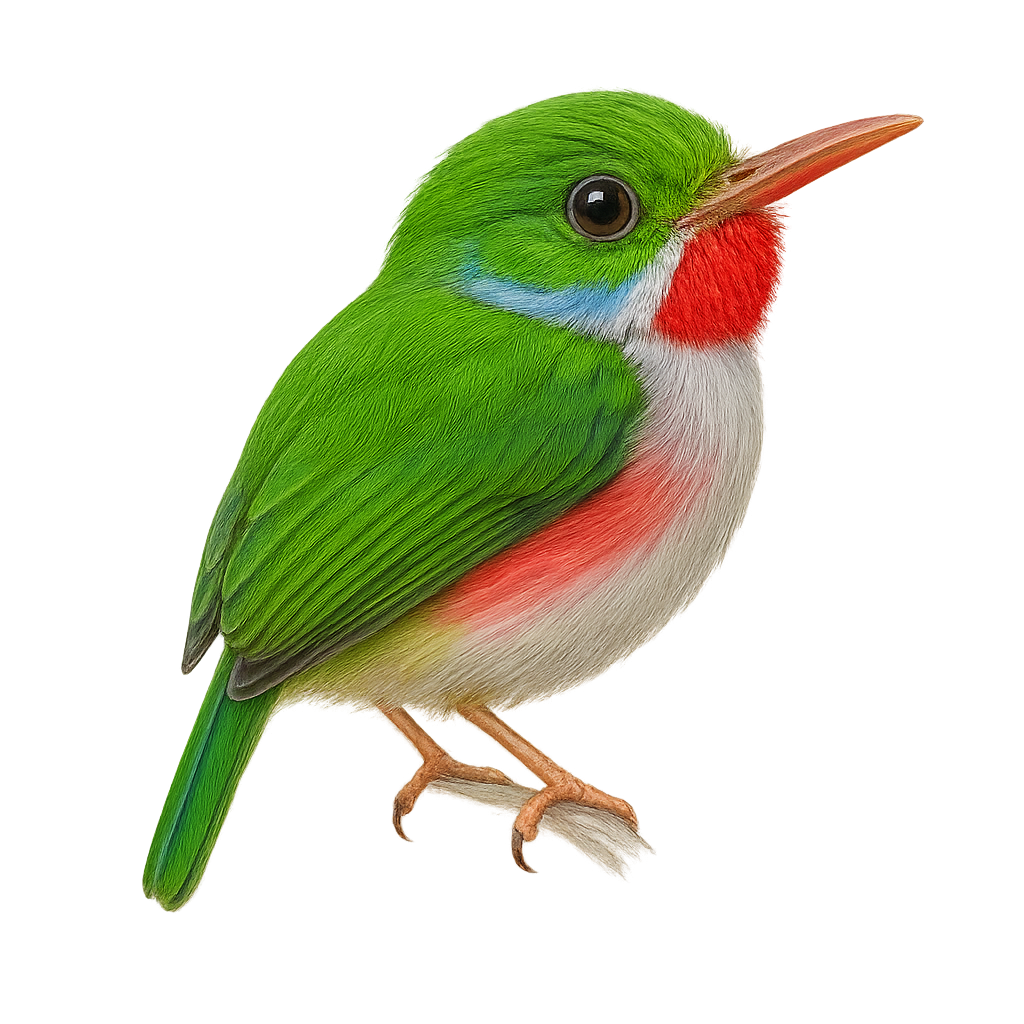Your wildlife photography guide.
Explore the cuban tody in detail, study its behavior, prepare your shots.
Where to observe and photograph the cuban tody in the wild
Learn where and when to spot the cuban tody in the wild, how to identify the species based on distinctive features, and what natural environments it inhabits. The WildlifePhotographer app offers tailored photography tips that reflect the cuban tody’s behavior, helping you capture better wildlife images. Explore the full species profile for key information including description, habitat, active periods, and approach techniques.
Cuban Tody
Scientific name: Todus multicolor

IUCN Status: Least Concern
Family: TODIDAE
Group: Birds
Sensitivity to human approach: Suspicious
Minimum approach distance: 5 m
Courtship display: April to June
Incubation: 18-20 jours
Hatchings: April to July
Habitat:
Humid forests, mangroves, wooded areas
Activity period :
Primarily active during the day, with peak activity in the morning and late afternoon.
Identification and description:
The Cuban Tody, or Todus multicolor, is a small bird endemic to Cuba, renowned for its vibrant plumage and fascinating lifestyle. Measuring about 10 to 11 cm in length, this bird features bright green feathers on its back, a white belly, and a striking red throat, making it easily identifiable. It primarily inhabits the island's humid forests, mangroves, and wooded areas. The Cuban Tody is an insectivore, feeding mainly on small insects and spiders, which it captures with quick and precise movements. It is also known for its melodious song and elaborate courtship displays. Although its habitat is limited to Cuba, it is relatively common and not currently threatened.
Recommended lens:
400 mm – adjust based on distance, desired framing (portrait or habitat), and approach conditions.
Photography tips:
To photograph the Cuban Tody, it is advisable to use a 400mm lens or longer to capture detailed images without disturbing the bird. Look for it in Cuba's humid forests and mangroves, where it is most active during the day. Be patient and discreet, as this bird can be suspicious. Try to capture its colorful plumage under good natural light to highlight its vibrant colors. Listen for its distinctive song to locate its position.
The WildlifePhotographer App is coming soon!
Be the first to explore the best nature spots, track rutting seasons, log your observations, and observe more wildlife.
Already 1 439 wildlife lovers subscribed worldwide

